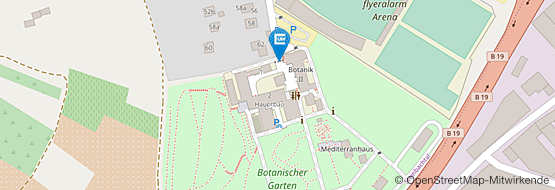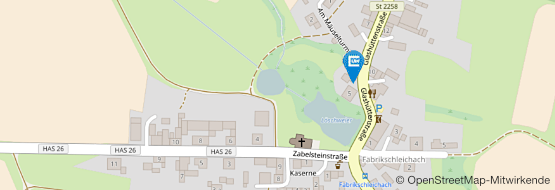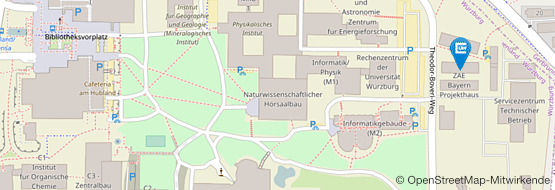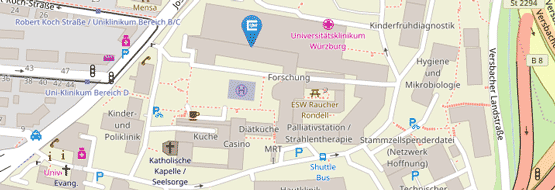Program details 2025
Lectures and labs will be held daily from 9.00 a.m. to 5.15 p.m.
Monday September 8th
lecture hall A102 and A103
8.30 a.m. Registration (compulsory) and Welcome by Dr. Elena Bencúrová in lecture hall A102 (including administration: attendance, insurance)
Course Certificates
Dear Course Members,
here are the details on getting your course certificate:
standard certificate (3 ECTS) you simply send a short summary on the course days regarding the scientific contents and what the key messages to learn were for every day (a total of 1-2 pages is enough; but this is no course evaluation but a scientific summary of the course contents) to Dr. Rapp-Galmiche, she will then send out the course certificate subsequently.
For a 5 ECTS certificate you send a summary of a particular topic (you can pick any lecture topic you like, please contact the lecturer of choice per e-mail and cc Dr. Rapp-Galmiche so that she knows from whom to expect the grading of the essay). Here the key point is to give a summary on the topic (about 4 pages, looking at current literature and giving proper references to current literature and of course just remember what has been taught in the course) and then write 3-4 pages about your own opinion and investigation on the topic. You may confirm the view presented in the lecture but you are also welcome to extend it by own suggestions or also point out the critical points, what is not yet clear, where more experiments etc. are warranted. Aim here to finish during December to send in the first draft. After corrections from the supervisor, the deadline for the revision is 9th of February. The summaries will be re-evaluated for completeness and content. After this the certificate for the course is sent to you.For this more demanding essay on a topic of the summer school in infection biology you can also get the course certificate with 5 ECTS and a grading (international A-E scale).
Monday September 8th
Systems Biology of Infection
Lecturer: PD Dr. Jörg Geiger
Medical Faculty
09:00h Foundations and Principles of Biobanking
- Biobanking Concepts and Frameworks
- Governance, Organizational and Structural Principles
10:30h Coffee break
11:00h Biobank Infrastructure and Resources
- Quality Management
- Data Management
- Information Technology
12:30h Lunch Break
13:30h Requirements and Challenges in Human Biobanking
- Laboratory Services
- Data Sources
- Ethical, Legal and Societal Issues
15:00h Group Work
small groups (3-4 persons) on selected topics.
Setting: The biobank is planning a study on infectious diseases. The goal is to collect samples from patients of all ages with a variety of infectious diseases. Patients will be recruited from hospitals, medical practices, and welfare institutions. Additionally, patients will need to be followed up with over time to monitor outcomes. Along with the biological material, information on lifestyle, nutrition, occupation, quality of life, and health status must be gathered.
- Logistics: Devise a concept for collecting samples from medical practices, rural areas, and remote places. Ensure that the samples are transported safely and in a quality-controlled manner to the biobank.
- Outreach: Suggest ways to approach patients and adjust to their specific needs. Adjust your procedures to cultural specifics. This could include ways to keep patients informed and build trust.
- Data management: Define the relevant data to be collected and how it should be organized and standardized. Draft and propose an infrastructure for data collection, maintenance, and access.
- Infrastructure: Identify the relevant components of communication and information technology. Draft a concept for the biobank to safely communicate and exchange data with sample providers.
- Sustainability: The biobank will require additional funding to operate the facility permanently. How can the biobank raise funds and cover expenses?
- ELSI: Draft an application for the ethical review board. Draft appropriate informational materials. Consider social issues, particularly those regarding vulnerable groups and stigmatizing diseases.
- Research: The samples should be made available to researchers. How can we get researchers interested? How can we provide samples and data to researchers? What services can we offer researchers? How can we enable access to the data for research use?
17:00h Presentation of the Results (15 min per group)
Tuesday September 9th
Parasitic Helminths
Lecturer: Prof. Klaus Brehm (Homepage)
Medical Parasitology
Institute of Hygiene and Microbiology - this is the only day that does NOT take place at the Biocenter!
Hygiene Institute of the University Hospital

Figure: Echinokokkus
Parasitic Flatworms: A tale of mortality and immortality.
Parasitic helminths are a major cause of so-called ‘Neglected Diseases’. And Neglected Diseases are called ‘neglected’ because nobody (or only very few) has/have an interest to study them. So, why are we doing it? This is something we’re going to figure out in the ‘Parasitic Helminth’-day of the summer school. We shall learn that the development of novel therapies is not the only motivation to do infectious disease research and that these parasites (like many others) are highly fascinating from the view-point of immunologists as well as cell-, developmental- and evolutionary biologists. Above all, we shall learn how molecular research can be done in a ‘non-mainstream’ setting and which strategies should be followed to establish an infectious disease model system from scratch.
Schedule
09:00-13:30 Lecture and practical in the Hygiene Institute of the University Hospital (Prof. Klaus Brehm)
13:00-13:30 Conclusions, final discussion
Wednesday September 10th
lecture hall A103
Networking Würzburg day
09:15-10:00 Career Day: Talk Prof. Alicia Ponte-Sucre, Humboldt professor, Insituto de Medicina Experimental, Universidad Central de Venezuela, Caracas
10:00-10:30 Round table
Discussion about BIPs, CharmEU and student exchange opportunities
11:00 Visit to the Chair of Functional Materials in Medicine and Dentistry
(guides to the Chair: Aman Akash and Elif Özer; guide at the Chair: Sanjana Mathew-Smith)
from 3:00 Visit the Würzburg castle (Festung Marienberg) and/or the Residence
If you plan to visit a laboratory to find out about a possible PhD, please do so in the afternoon on that day.
Thursday September 11th
lecture hall A103 and CIP Pool (ck 02-05)
Intracellular S. aureus
Lecturer: Dr. Martin Fraunholz (Homepage)
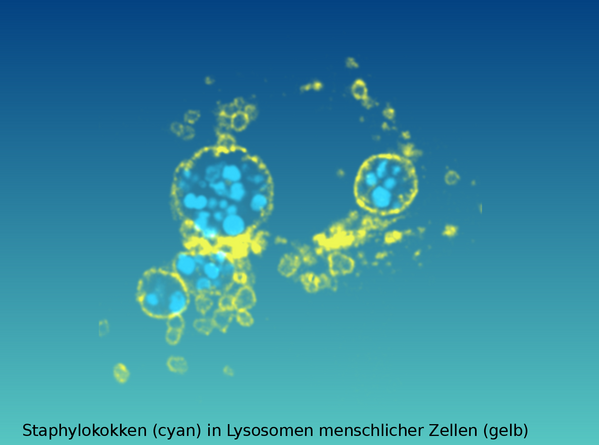
Figure: Staphylococcus aureus (cyan) in phagolysosomes of human cells (yellow)
Topic area: Microscopic analysis of intracellular bacterial host-pathogen interactions: Practical image analysis with Fiji/ImageJ (basics & motion tracking, feature counting)
Upon infection Staphylococcus aureus is readily phagocytosed by macrophages and neutrophils but is also to invade epithelial and endothelial cells, fibroblast, osteoblasts, and keratinocytes. The uptake by latter so-called non-professional phagocytes has been proposed to play a role in evasion of the innate immune system. Further survival of phagolysosomal killing by S. aureus may also lead to disseminating infections within migrating phagocytes. We and others have shown that S. aureus is capable of escaping from host cell phagosomes. One of our methods is microscopy based and relies on the recruitment of a cytoplasmically expressed host cell marker that is recruited to the bacterial cell wall upon phagosomal membrane rupture.
We will address theoretical and practical aspects of confocal laser scanning microscopy as well as the underlying fluorophores. We will analyze images of uninfected and infected human cells using Fiji/ImageJ, a tool which is handy for other image analysis aspects, too.
Participants should bring a USB Thumb drive, if they want to keep their own personalized Fiji/ImageJ version.
Schedule
Location: lecture hall A103 and CIP Pool
09:00-10:00 Introduction: Martin Fraunholz, Chair of Microbiology, University of Würzburg
10:00-12:30 Fiji/ImageJ to analyze biological data
- „Installation“ and Basics of biological image acquisition
12:30-13:30 Lunch break
13:30-16:00 Fiji/ImageJ to analyze biological data
- Image/Movie analysis in multiple dimension, Image quantification
-------------------------------------------------------------------------------------------------------------------------------------------------------------------------------------------------------------------------
Friday September 12th
Computational Infection Biology
Seminar room Bioinformatics
Lecturer: Prof. Dr. Thomas Dandekar (Homepage)
Chair, Bioinformatics
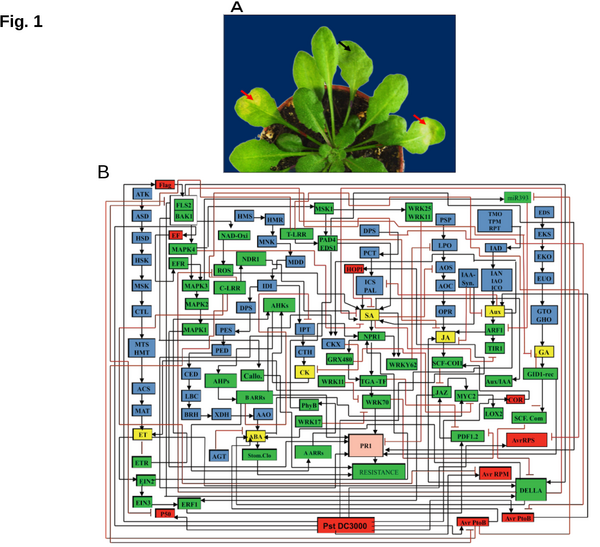
Pseudomonas Syringae attacks the host -- how do you understand the host response?
(A) Phenotype: Pst (104 CFU/ml) infection; red arrows indicate pathogen inoculation; black arrow indicates mock (10mM MgCl2) inoculation. Symptoms weare photographed three days post pathogen inoculation (DPPI). (B) Network: Topology of Pst- mediated hormone disease networks in Arabidopsis. Connectivity among nodes is based either on activation (->) or inhibition (-|). Node designation: blue, enzymes of hormone biosynthesis and degradation; yellow, active hormone molecules; green, host regulatory factors; red, Pst- originated pathogenicity factors responsible for triggering immunity in Arabidopsis; pink, “PR-1”, marker node for immunity against the infection of Pst in Arabidopsis. All nodes are denoted by abbreviations.
More information on these questions is found in our plant cell paper: Naseem M, Philippi N, Hussain A, Wangorsch G, Ahmed N, Dandekar T. Integrated systems view on networking by hormones in Arabidopsis immunity reveals multiple crosstalk for cytokinin. Plant Cell. 2012 May;24(5):1793-814.
However, the same techniques can also be applied (and are shown in the course) to study human infection defense against pathogens.
Schedule
09:15-11:00 Sequence and structure analysis: Prof. Thomas Dandekar, Department of Bioinformatics University of Würzburg (chair) and EMBL Heidelberg
Title: "Systems biology of infection – bioinformatical approaches"
11:00-12:45 Database and Interactomics
- 11:00-11:45 Dr. Chunguang Liang, practical (CIP Pool ck02-05)
- 12:00-12:45 Dr. Meik Kunz, University of Erlangen (ZOOM Meeting, seminar room Bioinformatics)
12:45-13:30 Lunch Break
- 13:30-14:15 Dr. Elena Bencúrová, Laboratory of Biomedicine, Microbiology and Immunology,
University of Veterinary Medicine and Pharmacy in Kosice, Slovakia and University of Würzburg
Title: "Proteomics in infection biology" (seminar room Bioinformatics)
14:15-16:00 Current trends in parasitology
- Prof. Alicia Ponte-Sucre, Humboldt professor, Insituto de Medicina Experimental, Universidad Central de Venezuela, Caracas
Title 1: "TICS, surveillance and prevention in neglected diseases Relation with the sustainable and millenium goals"
Title 2: "Betulinic acid derivates activity in L.braziliensis. Statisitcal methods to evaluate the IC50"
16:15-18:00 Drug design and current trends in infection biology
- 16:15-17:00 Prof. Sergey Shityakov, ITMO University St. Petersburg (ZOOM Meeting, seminar room Bioinformatics)
- 17:00-18:00 Prof. Thomas Dandekar, Department of Bioinformatics University of Würzburg (chair) and EMBL Heidelberg
Title: "Current trends of modelling in infection biology"
Useful link:
http://www.nature.com/news/mapping-identifies-best-targets-for-malaria-prevention-1.10781
References:
Systems Biology
A Textbook
Klipp, Edda / Liebermeister, Wolfram / Wierling, Christoph / Kowald, Axel
https://www.wiley-vch.de/de/fachgebiete/naturwissenschaften/systems-biology-978-3-527-33636-4
Arthur Lesk "introduction to bioinformatics"
https://www.amazon.de/Introduction-Bioinformatics-Arthur-Lesk/dp/0199651566
For German speaking students the book by Andrea Hansen is fine
https://www.springer.com/de/book/9783764362539
as well as my own (with Meik Kunz)
https://link.springer.com/book/10.1007/978-3-662-65036-3
18:15 Farewell dinner





